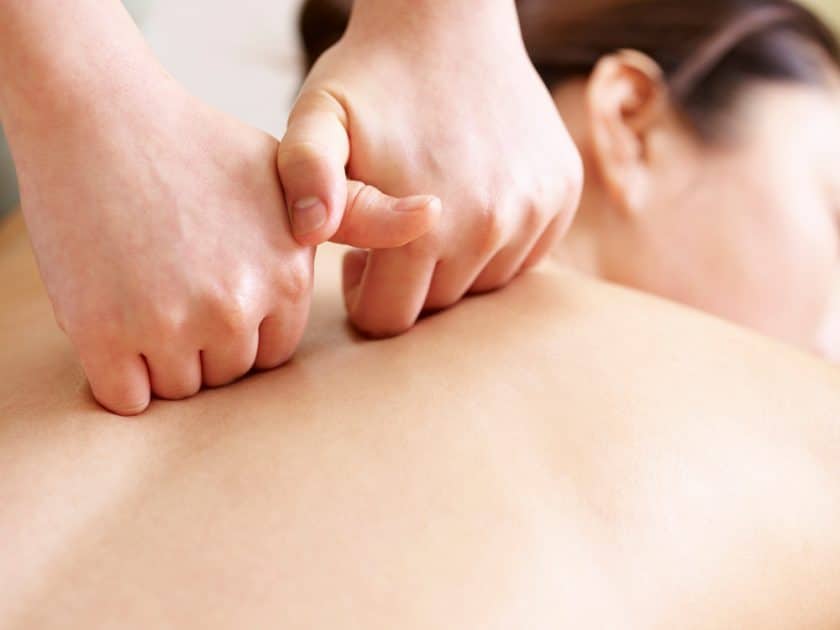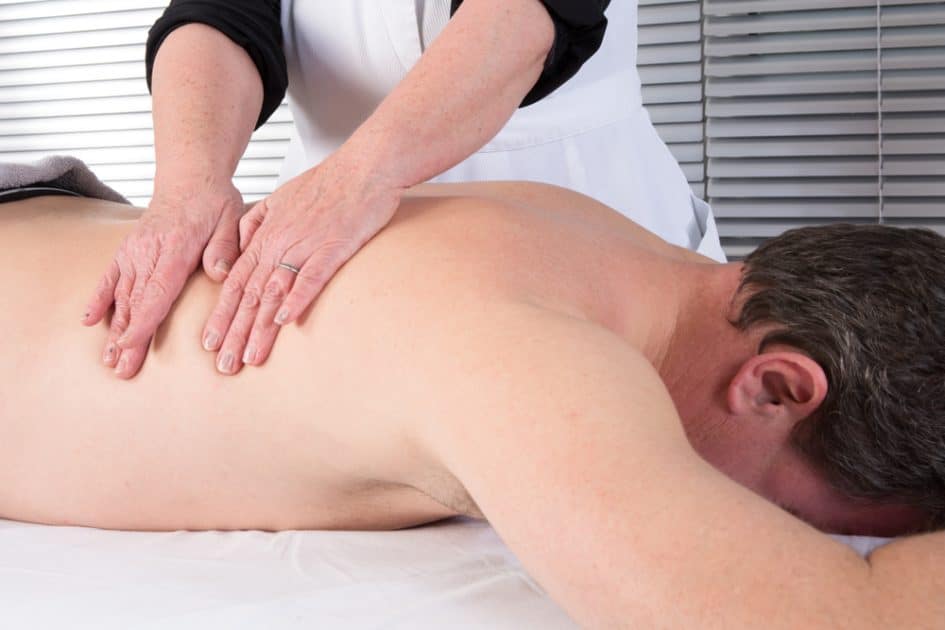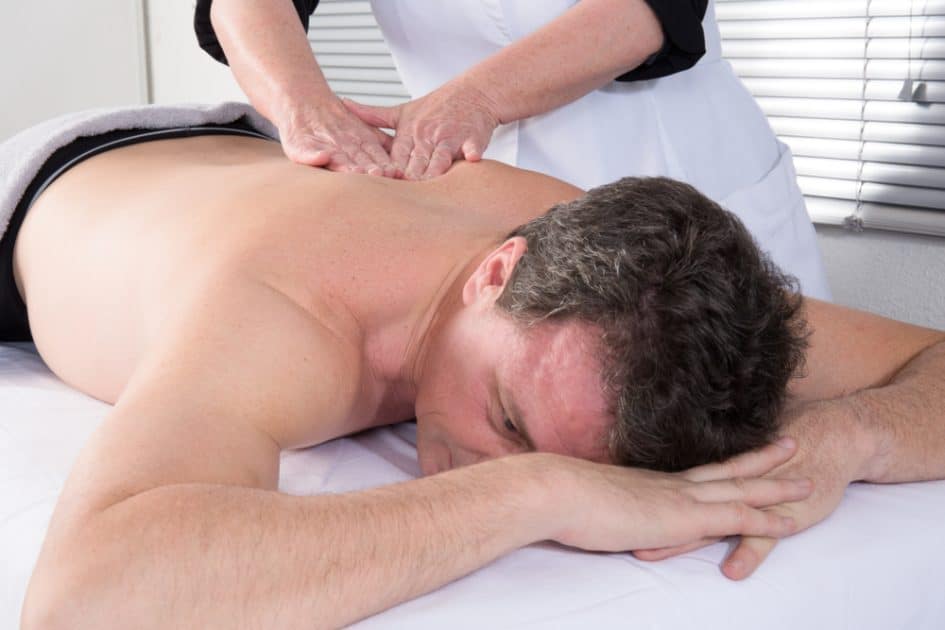Tuina massage, which has ancient roots, is a unique kind of bodywork that is intimately intertwined with the domain of energy balance. Practitioners seek to synchronize an individual’s energy flow, also known as Qi or life force, by using a range of methods such as pressing, kneading rolling, and stretching.

Tuina massage may be traced back to the famous ancient Chinese medicinal literature, Huang Di Nei Jing. Nonetheless, archaeological digs have discovered evidence of its presence as far back as 2700 B.C.E., indicating that it is a long-lasting activity.
Tuina massage employs a wide range of hand and arm movements to operate on your body, providing an energetic and restorative impact.
Origins of Tuina Massage
Tuina Massage pronounced “tween-uh,” derives from ancient Chinese culture and traditional medicine. It is one of the earliest known techniques of therapeutic massage, with origins dating back over 2,000 years.
Tuina Massage sees the body as an interconnected network of energy pathways, where Qi (life force energy) flows. Disruptions in Qi can cause health issues. Tuina Massage was mentioned in the ancient Chinese medical text, the Yellow Emperor’s Inner Canon, as a way to rebalance Qi through acupressure.

Over time, tuina evolved into a systematic approach for various medical conditions. It was popular in Chinese history, and used in imperial courts and by the public. Passed down through generations, tuina has adapted to different health needs and remains a key part of traditional Chinese medicine with global healing effects.
Techniques and Method
Tuina massage incorporates a number of massage and manipulation techniques. This style of massage is usually combined with stimulation of certain pressure points in the receiver’s body, akin to acupuncture, with the primary purpose of harmonizing the flow of qi.
The Rolling Method: Concentrates on soft tissue techniques to alleviate joint injuries and muscle sprains.
One-Finger Pushing Method: Applies acupressure techniques with a focus on internal disease treatment.
Nei Gung Method: Involves exercises generating Nei Gong qi, a form of energy work that initiates internally and works outward, along with specific massage methods to rejuvenate depleted energy systems.
Bone Setting Methods: Primarily employs manipulation techniques to realign the musculoskeletal system. This method can be beneficial for individuals suffering from joint injuries and nerve pain.
Potential Applications of Tuina Massage
Tuina massage has significant promise as a supplementary or alternative treatment for addressing specific health conditions. The technique’s adaptability allows it to be used on a wide range of regions, including the neck, shoulders, hips, back, arms, legs, and ankles.
The World Tui-Na Association, a renowned global platform promoting Tuina’s integration into mainstream healthcare, purports that Tuina massage may aid in addressing a myriad of health problems. These extend from musculoskeletal disorders to conditions affecting various internal systems of the body.
Musculoskeletal Disorders
Tuina massage may be quite effective in the treatment of a wide range of musculoskeletal disorders. Frozen shoulder syndrome, herniated disk syndrome, and whiplash are some of the conditions that may improve with targeted pressure and manipulation. Tuina techniques are supposed to reduce inflammation, discomfort, enhance mobility, and facilitate healing in injured areas.
Circulatory System Disorders
Tuina massage may provide supportive care for circulatory system diseases such as hypertension and irregular heartbeat. It can contribute to better-balanced blood pressure levels and a controlled pulse by improving blood circulation and reducing stress.
Respiratory System Disorders
Tuina may be used as a supplemental treatment for respiratory system illnesses such as asthma and chronic bronchitis. It may help lessen symptoms like shortness of breath and coughing by improving blood circulation and energy supply to the lungs.
Disorders of the Reproductive System
Tuina may also aid in the treatment of reproductive system disorders such as menstrual irregularities and sexual dysfunction. It can help restore the body’s reproductive system’s balance by controlling the flow of Qi, or life energy.
The Backing of Science
Significantly, the potential benefits of Tuina massage aren’t just anecdotal. There exists scientific evidence supporting these claims, thereby cementing Tuina massage as a credible therapeutic alternative. Numerous research studies have highlighted its efficacy in managing various health conditions, underscoring the relevance and applicability of this ancient art in modern health care.
Regardless of its numerous potential uses, it is critical to remember that Tuina massage should only be conducted by skilled and qualified practitioners. Furthermore, while it can be an effective supplementary therapy, it should not be used in place of traditional medical therapies, but rather in conjunction with them to improve health results. Before beginning a Tuina massage program, like with any new therapy, speak with a healthcare physician.
Benefits of Tuina Massage
Tuina massage’s applicability extends beyond pain management and illness therapy. It not only serves as an alternative treatment strategy for a variety of health concerns, but it also meets the demands of people seeking general wellness. Here are some significant Tuina massage benefits:

1. Relaxation and Stress Relief
Tuina massage can instill a deep sense of relaxation in recipients. The techniques applied during the massage aim to harmonize the flow of Qi, leading to stress reduction. This holistic approach can bring tranquility, mitigating the physiological impacts of chronic stress.
2. Energizing Effect
Despite its relaxing properties, Tuina massage can also be energizing. By improving the circulation of Qi and blood, it can provide a natural energy boost and enhance overall vitality, making it an excellent choice for those struggling with fatigue or general sluggishness.
3. Pain Management
One of the significant benefits of Tuina massage lies in pain management. It can alleviate various forms of physical pain, from musculoskeletal disorders to migraines. The massage’s targeted pressure can help to reduce inflammation and improve mobility, potentially reducing reliance on pain medication.
4. Improves Sleep
Insomnia or other sleep-related disorders may find relief through Tuina massage. By promoting relaxation and reducing stress, it may contribute to improved sleep quality, helping individuals to rest more efficiently.
5. Headache Relief
Tuina can be an effective strategy for managing headaches, including tension headaches and migraines. It achieves this by relieving muscle tension, improving blood circulation to the head, and balancing the body’s energy.
6. Promotes Digestive Health
Tuina massage can enhance digestive health by stimulating specific acupoints related to the digestive system. It may alleviate symptoms of conditions like constipation, bloating, and gastritis, and promote better digestion.
7. Enhances Immunity
Through the harmonization of Qi, Tuina massage may also bolster the body’s immune system. Improved circulation and stress reduction can enhance the body’s natural defense mechanisms, potentially making it more resilient against diseases.
8. Promotes Overall Well-being
Last but not least, Tuina massage promotes general well-being. Regular sessions can help maintain a balanced state of body and mind, leading to enhanced quality of life.
Tuina massage is a diverse choice for anyone looking to improve their health and wellness. However, keep in mind that outcomes might differ from person to person. Before adopting Tuina massage into one’s health regimen, like with any other therapeutic practice, it is always best to see a healthcare practitioner.
Comparison to Other Massage Techniques
While Tuina massage has certain parallels to prominent Western massage methods like Swedish and deep tissue massage, it distinguishes itself with its own qualities.
Both Tuina and Western massage attempt to reduce muscular tension and promote relaxation, although their essential ideas and applications differ.
Focus on Energy Movement
Tuina massage is distinguished by its emphasis on the movement of qi (Qi) throughout the body. Tuina practitioners believe that the body’s life energy runs along precise paths known as meridians, which are based on ancient Chinese medicine. Tuina massage seeks to alleviate blockages and imbalances in the energy flow by using focused pressure and manipulation methods on acupoints and along meridians.
Western massage techniques, on the other hand, while effective for relaxation and pain reduction, do not highlight the idea of energy flow. Various massage strokes and methods, primarily focus on relieving muscular tension, boosting blood circulation, and treating bodily discomforts.
Specific Health Issue Treatment
Tuina massage targets specific health issues by customizing sessions to address symptoms like headaches, digestive problems, or musculoskeletal disorders through acupressure points and techniques. Unlike Western massages, Tuina provides overall benefits and relaxation instead of condition-specific treatment.
Integration with Traditional Chinese Medicine
Tuina massage is firmly ingrained in traditional Chinese medicine, which takes a comprehensive approach to health and well-being. The body, mind, and spirit are all interrelated in TCM, and any imbalance in one can impact the others. Tuina massage adheres to this holistic viewpoint, taking into account the total harmony and balance of the body.
Western massage therapies, on the other hand, are frequently seen as stand-alone relaxation or therapeutic treatments. While they can clearly improve well-being, they are not necessarily tied to a larger medicinal philosophy such as TCM.
Incorporation of Herbal Remedies
Tuina massage can integrate herbal medicines like as poultices, compresses, or salves to boost its therapeutic benefits in some circumstances. These herbal treatments supplement massage by offering extra therapeutic characteristics to the afflicted regions, contributing to the treatment’s overall efficacy.
While both Tuina and Western massage therapies provide numerous physical and emotional advantages, Tuina massage stands out due to its unique emphasis on energy flow, condition-specific therapy, integration with traditional Chinese medicine, and the use of herbal medicines. Tuina massage is thus a useful and distinct therapeutic alternative for anyone seeking a comprehensive approach to health and fitness.
Recommended:
Body Electric Massage
The Bottom Line
Tuina Massage, a traditional Chinese therapy, boasts almost two millennia of efficacy. Unlike Western massages, it focuses on energy flow, acupoints, and health conditions. Beyond relaxation, it treats musculoskeletal issues, stress-related diseases, and internal disorders.
Tuina enhances health by relieving pain, reducing inflammation, boosting the immune system, and increasing energy. Its holistic approach considers physical, mental, and emotional well-being. Herbal medicines used in Tuina sessions enhance its healing power.
FAQs
Difference between Tui Na and massage
Tui Na is a form of traditional Chinese medicine that focuses on energy flow and specific health issues, using acupressure and manipulation. Massage is a broader term for various techniques that primarily aim to relax muscles and promote general well-being.
What to wear for Tui Na
Wear loose and comfortable clothing for Tui Na massage. Some practitioners may provide a gown or sheets for modesty during the session.
Tui Na massage benefits
Tui Na massage is good for addressing musculoskeletal issues, stress-related conditions, and internal disorders. It can help with pain relief, stress reduction, improved circulation, and overall well-being.
Side effects of Tui Na massage
Tui Na massage is generally safe, but some people may experience slight discomfort or bruising during or after the session. It’s essential to consult a healthcare professional if you have specific health conditions.
Showering after Tui Na
It is generally fine to shower after Tui Na massage, but it’s advisable to wait at least 30 minutes after the session to allow the benefits to fully integrate into the body.

















